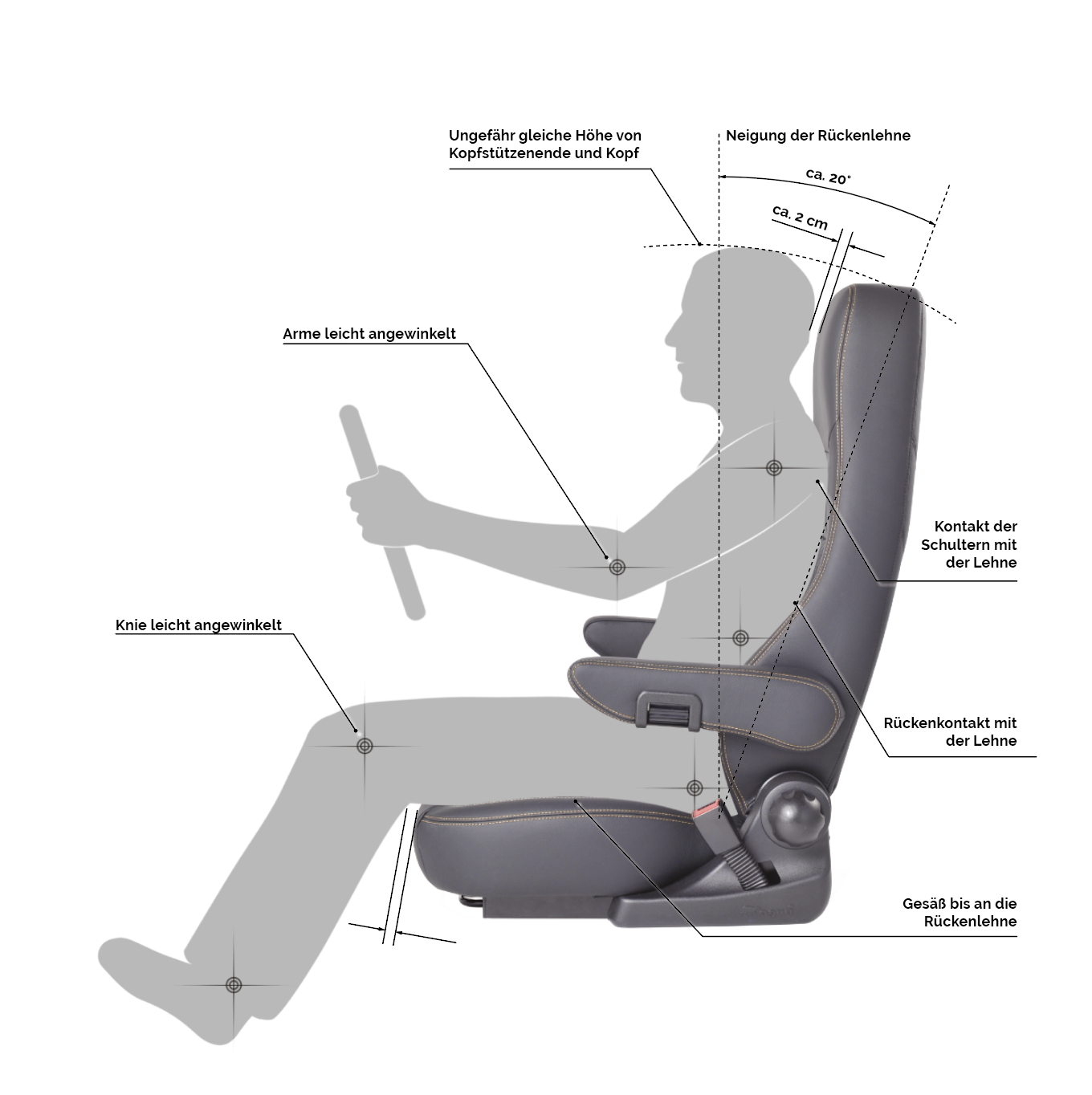- Sitting knowledge
- Glossary
"Healthy sitting is more than just a question of posture -
it is the basis for well-being, concentration and energy in everyday life."
How to sit correctly
Sitting in the car is an important issue, as long journeys or incorrect sitting positions can lead to back pain, tension and other health problems. Here's how you can prevent this:
1. Seat adjustment
- Adjust the distance between the seat and the pedals and steering wheel: Sit with your buttocks as close as possible to the backrest and push through the pedals. The legs should still be slightly bent. Adjust the distance to the steering wheel so that the arms are slightly bent (approx. 120 degree angle)
- Adjust the backrest angle: Adjust the backrest so that the steering wheel can be reached with slightly bent arms. A slight backward tilt is ideal. The shoulders should be in contact with the backrest.
- Adjust the seat tilt: Adjust the seat slightly upwards so that the thighs rest loosely on the seat.
- Seat height and depth: The seat height should be adjusted so that the knees form a 90-degree angle and the front edge does not press into the back of the knees.
- The headrest should provide optimum support for the head and prevent neck injuries in the event of an accident.
2. Dynamic sitting
- Keep changing your sitting position and leg position to improve circulation and prevent tension.
- Keep changing the position of the lumbar support to prevent fatigue and maintain a relaxed posture.

3. Air suspension and comfort features
- Air suspensions offer better cushioning and comfort on uneven roads, which reduces the strain on the spine, especially on long journeys.
- Seat heating and ventilation contribute to seat health by increasing comfort and preventing tension.
4. regular breaks
- Drivers should take a break at least every 2 hours to move and stretch.
